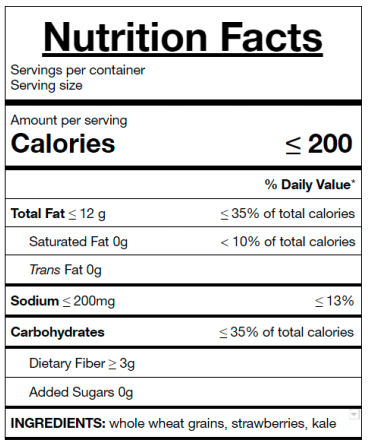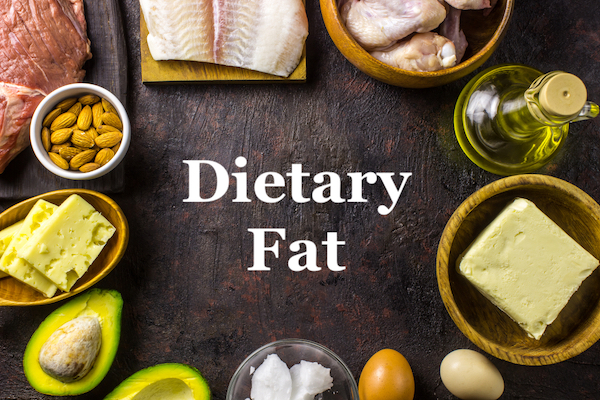
The quality and quantity of food eaten by elderly people can be affected by many factors. These include social and emotional factors. It is important to identify specific elderly subgroups, as well as the role of food related support services. To help the elderly understand nutrition and to make it easier to eat healthy foods, it is important to offer nutrition education.
Insufficient nutrition or malnutrition in the elderly can lead to decreased physical and mental activity and reduced strength and energy. Malnutrition is one of the main causes of premature death in the elderly. The European Society of Clinical Nutrition and Metabolism has defined malnutrition in this way: a lack of nutrition necessary to maintain normal body weight, energy, and body shape.
An older adult who is housebound or lives alone may be more at risk of nutritional deficiencies than the rest. This could be due in part to decreased mobility, reduced income, or limited access to food at home.

Along with the nutrition support services, nutrition education can be important in reducing the chance of developing a chronic condition. It also promotes the healthy aging process and delays the onset of adverse health conditions, such as dementia, by improving dietary intake and sedentary behavior.
The goal of the Healthy Aging Program is to promote the health of older adults and reduce hunger and food insecurity. They also have the chance to make new friends and take part in health promotion services. The Healthy Aging Program allows access to nutrition services. This program can help to improve diet and sedentary behavior. The program encourages healthy eating habits and exercise, as well as a positive attitude towards aging.
REACH is a research project that focuses upon nutrition and physical activity in older people. To explore the food habits of older adults, the project relies on semi-structured interviews. This information was then used for development of a scenario-based personalized food provision module.
The module consisted of recipes that were adapted to each individual, considering both official guidelines and practices within elderly nutrition. A full personalised nutrition was calculated for each participant, including carbohydrates, protein, and fat. It included all of the above-mentioned recipes as well as the cooking conditions.

A quarter of all elderly Americans live in rural areas where food access is limited. Older adults may not have the money to purchase nutritious foods if they are on a fixed income. They might also reduce their food intake or throw away food. They may also opt for cheaper brands.
The elderly population requires prevention measures that are customized for each individual. Personalized nutrition should also be encouraged. The Elderly Nutrition Program also receives client contributions and state and federal funding. It is also supported by local funding.
The Elderly Nutrition Program is administered by the Department of Health and Human Services (DHHS) and the U.S. Department of Agriculture (USDA).
FAQ
What's the best diet?
Your lifestyle and individual needs will determine the best diet for your body. It's also important to consider how much energy your exercise consumes, whether you prefer low-calorie meals, and if fruits and veggies are something you enjoy.
Intermittent fasting is a good option if you're trying to lose weight. Intermittent fasting is a way to eat only certain meals during the day instead of three large meals. This might be better than traditional diets that have daily calorie counts.
Some studies suggest that intermittent fasting may improve insulin sensitivity and reduce inflammation, which can lead to improved blood sugar levels and reduced risk of diabetes. Other studies suggest that intermittent fasting could promote fat reduction and improve overall body structure.
These are the 7 secrets to a healthy life.
-
Make sure you eat right
-
Exercise regularly
-
Rest well
-
Drink plenty of water.
-
Get enough sleep
-
Be happy
-
Smile often
Here are five ways to lead a healthy lifestyle.
These are 5 ways you can live a healthy and happy life.
Living a healthy lifestyle includes eating right, exercising regularly, getting enough sleep, managing stress, and having fun! Good eating habits include avoiding processed foods, sugar, unhealthy fats, and avoiding junk food. Exercise is good for your body and muscles. Getting enough sleep improves memory and concentration. Stress management helps reduce anxiety and depression. And finally, having fun keeps us young and vibrant.
What is the problem with BMI?
BMI stands to Body Mass Index. This refers to the measurement of body weight based on height. This formula calculates BMI.
Divide the weight in kilograms by the height in meters squared.
The result is expressed using a number from 1 to 25. Scores between 0 and 25 indicate obesity. Scores higher than 18.5 are considered overweight. Scores higher than 23 are considered obese.
A person with a body mass index of 22 and a weight of 100 kg and a height 1.75m will have a BMI.
Statistics
- This article received 11 testimonials and 86% of readers who voted found it helpful, earning it our reader-approved status. (wikihow.com)
- nutrients.[17]X Research sourceWhole grains to try include: 100% whole wheat pasta and bread, brown rice, whole grain oats, farro, millet, quinoa, and barley. (wikihow.com)
- WHO recommends consuming less than 5% of total energy intake for additional health benefits. (who.int)
- The Dietary Guidelines for Americans recommend keeping added sugar intake below 10% of your daily calorie intake, while the World Health Organization recommends slashing added sugars to 5% or less of your daily calories for optimal health (59Trusted (healthline.com)
External Links
How To
How to Keep Your Health and Well-Being In Balance
This project had the main purpose of providing suggestions for how to maintain your health. To maintain good health, the first step is to learn what you can do. This meant that we had to determine what was best for our bodies. After looking at various ways people can improve their health, we discovered that there are many options that could be of help to us. Finally, we came up some tips that would make us happier and healthier.
We began by looking into the various types of food we eat. Some foods are harmful and some are good for us. Sugar, for example, is known to be very unhealthy as it can lead to weight gain. On the other hand, fruits and vegetables are good for us because they contain vitamins and minerals that are essential for our bodies.
Next we considered exercise. Exercise is good for our bodies and gives us energy. Exercise makes us happy. There are many exercises you can do. Some examples include walking, running, swimming, dancing, playing sports, and lifting weights. Yoga is another way we can increase our strength. Yoga can be a great exercise as it increases flexibility, improves breathing and is a great way to increase strength. We should avoid junk food and drink lots of water if we are trying to lose weight.
Let's talk about sleep. Sleep is one the most important things we do every single day. If we don’t get enough sleep, our bodies can become fatigued and stressed. This can lead us to many problems, including back pain, depressions, heart disease, diabetes and obesity. It is essential that we get sufficient sleep in order to keep our health good.